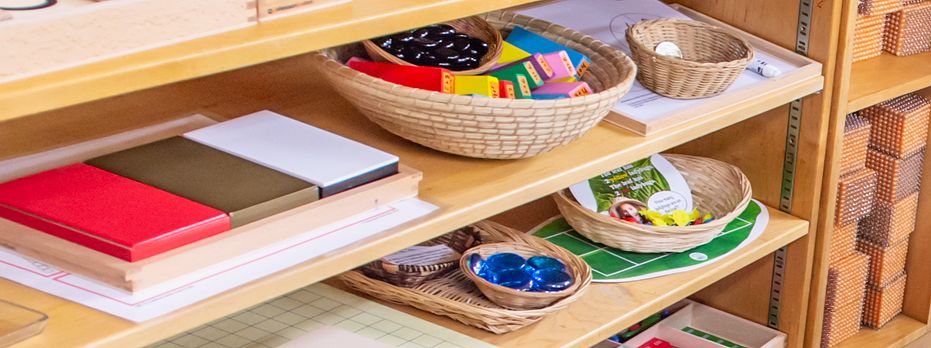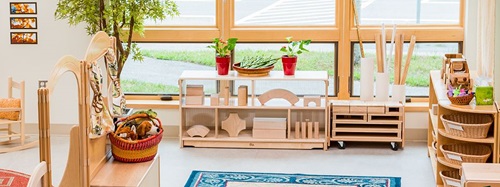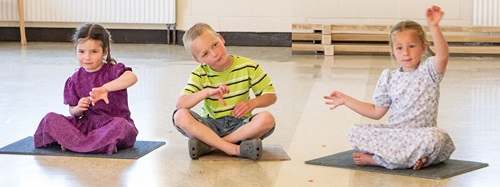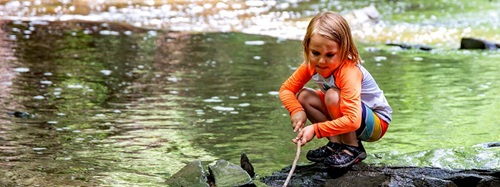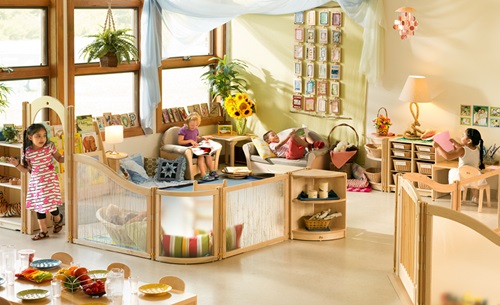Montessori Education
| January 2009“There are many who hold, as I do, that the most important part of life is not the age of university studies, but the first one, the period from birth to the age of six. For that is the time when a man’s intelligence itself, his greatest implement, is being formed.” (Dr. Maria Montessori)
Creative Education
The education of the child begins in the home. Dr. Montessori believed in the importance of the prepared environment. She believed that the child, from birth to six years of age, has an absorbent mind. The child uses the senses to learn about the world and to classify impressions. The child has a need for independence that is manifested in freedom of movement and acquisition of language. The child’s need for order and the development of concentration is developed in a carefully prepared environment.
This is 2009. Children’s homes are filled with televisions, computers, video games, and battery operated toys. The “things” in the child’s home environment engage the child in activities that are controlled by electronic devices. This means that the child is not acting upon the environment. The addiction to these electronic devices begins at an early age. We need to help parents understand that the environment for the young child needs to be set up so that the child can freely explore the environment through the use of the senses.
“The skill of man’s hand is tied up with the development of his mind, and with the light of history, we see it connected with the development of civilization. Hence the development of manual skill keeps pace with mental development. Certainly, the more delicate the work, the more it needs the care and attention of an intelligent mind to guide it.”
-Dr. Maria Montessori
Home Environment
The home environment needs to include order, simplicity, and child size furniture. Children enjoy being engaged in simple household chores. Some ideas for the home are the following:
- low clothes racks and hooks
- a bed they can enter and exit without adult help
- low toy shelves
- table and chair that is child sized
- baskets of books in each room in the house, (a few books in each basket)
- window washing, (I use our sliding glass door for this activity)
- dusting
- setting table
- folding simple pieces of laundry, (ie: washcloths)
- washing the child’s table
- helping with car washing
- simple gardening activities
- watering plants
- snack cupboard
- pouring activities
- cracking eggs
These are only a few activities children can do in the home. In the beginning there will be many messes. Look upon a mess as an opportunity to show the child how to clean up the environment. Keep a sense of humor. The most important aspect of a child’s personality and intellect develop through participation in the life of the family. The child learns self-respect, independence, and the joy of contributing to the community.
School Environment
The Montessori teacher’s role is to prepare an environment that caters to the natural development of the child.
“…And so we discovered that education is not something which the teacher does, but that it is a natural process which develops spontaneously in the human being. It is not acquired by listening to words, but in virtue of experience in which the child acts on his environment. The teacher’s task is not to talk, but to prepare and arrange a series of motives for cultural activity in a special environment made for the child.”
-Dr. Maria Montessori
Practical Implementation
If you visit a Montessori environment you will see child size table and chairs. There will be low shelves. The environment will have order and beauty. Everything in the environment will be at the level of the children. There will be a tile floor surface for ‘wet’ and art activities. The outside space will be prepared as carefully as the inside space. The environment will include things of nature. The teacher is a facilitator. The teacher “must learn how to observe, how to be calm, patient, and humble, how to restrain her own impulses, and how to carry out her practical tasks with the required delicacy.” (Dr. Maria Montessori) Since there is a three-year age span in the classroom, you will see children helping each other with lessons.
The environment will be divided into areas. The areas represent practical life. You will see children pouring their own juice, fixing a snack, mopping a floor, scrubbing a table, watering plants, learning to tie shoes, and doing many other activities that promote the development of order, independence, concentration, and coordination of movements. The child’s repetition of the activity leads to the development of new skills the child will need for a life of learning.
Art is important in developing the child’s love of beauty. This part of the environment will include easel, paint, clay, collage materials, beautiful art prints, and a variety of other materials for the child to explore.
Music is a universal language in our world. Dr. Montessori introduced a set of musical bells for the child to learn about matching sounds and creating music. Teachers use audiotapes, songs, and movement to develop an appreciation and joy of participating in musical experiences.
The math area begins with quantity before introducing symbols to the child. They learn the quantities of one to ten before tracing the sandpaper numerals. They learn to match quantity and symbol. They learn the importance of the zero. The math materials are set up for the young child to learn every math concept by use of beautifully designed math materials. They can see and feel the difference between one and ten, one and one hundred, and one and one thousand. The child is using the senses to experience quantity. The process is more important than the product. The child leaves the early childhood environment with a solid foundation in math.
The science environment is rich with objects from nature. Simple experiments are set up to help the child make discoveries about the physical world. Nature walks and trips to nature centers may be a part of the curriculum.
Language & Learning
There is a language area but language is part of the whole environment. The child learns the names of everything in the environment. Language is enriched when the child learns the correct names of animals, geometric solids, tools in practical life, songs, and the list goes on. Dr. Montessori also gave us the sandpaper letters, the movable alphabet that is used for the child to put sounds together to form words. Dr. Montessori was the first educator to discover that writing comes before reading.
The sensorial area of the classroom is the unique area in a Montessori classroom. The goal of the sensorial material is to refine the senses. The child feels all sides of the cube and learns that this is a cube. The child traces the outside of a square and learns that this is a square. The child matches colors, sound cylinders, textures, geometric solids with the sides and bases, and many other materials that will help develop the intellect through the use of the senses. This area is the foundation for math, geometry, and language.
The social studies area includes wooden maps. The continent map leaves the child with the impression of the seven continents and their placement on the globe. The child is introduced to people and customs from many parts of the world. Children love to know about the animals that live on different continents. They are interested in family customs, dress, holidays, and food.
Peace education is important. This happens when the teacher shows respect for each child. She models how to solve conflicts. She teaches children how to appreciate the acts of classmates. Grace and courtesy is an important part of the environment.
Dr. Montessori said, “We must help the child to act for himself, will for himself, think for himself; this is the art of those who inspire to serve the spirit.”
Montessori, Maria, The Absorbent Mind, New York: Delta 1967
Montessori, Maria, The Discovery of the Child, Oxford: Clio 1988
Montessori, Maria, Education for a New World, Oxford: Clio 1989

